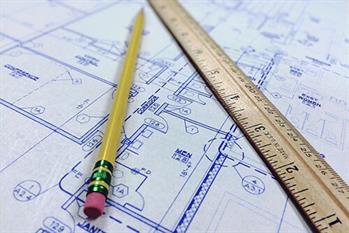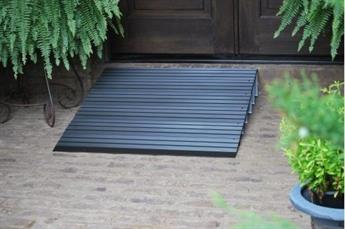
How To Make An Older House More Accessible For Those With Mobility Issues
We all love our homes, but if you or someone you love faces mobility issues, it can be difficult to remain at home safely. How can you make an older home more accessible? This is not an easy fix, but it is something that is doable with the right approach.

1. Determine your current needs and estimate your future ones.
Someone using a cane today may eventually need a walker. Someone with minor vision problems may progress to lesser vision. When thinking about changing your current home, be realistic and plan for the worst, so that you won’t be in this position again.
2. Survey your home.
Walk around the home with a clipboard in hand. Make a list of the accommodations that need to be made. Consider these questions:
- How easy is it to enter the house? Install a ramp or a railing if you have trouble with stairs. Look into expanding the doorways if you use a wheelchair or walker.
- How well can you navigate around the house? Make sure you can you get over all thresholds and through necessary doorways, especially if you have a wheelchair. Flatten thresholds and remove any loose carpeting or raised areas in your floor that you can trip on. If you have trouble getting off the couch without assistance, consider chairs that lift. If you have trouble reaching thermostats and light switches, install “smart” versions that you can control remotely.
- To help with stability when using the shower or toilet, install grab bars. Think about installing easy-to-use temperature controls in the sink or shower.
- How easy is it get what you need in the kitchen? Place all essential items in lower cabinets if they’re hard to reach. Have appliances like toaster ovens and microwaves on lower tables, so you have easy access to cooking tools.
- To access bedrooms on the second floor, consider a chairlift. Or, move your bedroom downstairs. Make sure clothing is easily accessible in lower drawers and shelves, and lower your bed if you have trouble getting in and out.

3. Meet with occupational or physical therapists.
These professionals can give you additional ideas about modifications. Their insight can be especially helpful if you’re dealing with complex mobility issues.
4. Find out how much updates will cost.
Start simple and identify what changes can be easily made. Some basic safety improvements can be done for free, like removing throw rugs, clutter and other obstacles. Many portable lifts, ramps and other mobility aides are available through local home medical providers. Get estimates from a contractor or handyman to get an idea of the costs involved for the changes you cannot do yourself. Make sure you get two or three estimates and ask the company or person for references. Contact the references and ask them what they did and did not like about the work that was done.
5. Figure out how you’ll pay for the modifications.
Know that many portable lifts, ramps and other mobility aides are available through local home medical providers, but these may or may not be covered by insurance. You may also qualify for some grants or low-interest loans to modify your home. If you are a veteran or active in the military, reach out to the following resources:
- U.S. Department of Veterans Affairs
- The Gary Sinise Foundation Restoring Independence Supporting Empowerment (RISE) Program
- OnBehalf.org
Both military and non-military persons may qualify for the following
- The U.S. Department of Agriculture (USDA) and state offices of the USDA provide grants at the local level
- The Council of State Housing Agencies
- The Benevolent and Protective Order of Elks
- Local and state housing agencies
- Americorp (https://rebuildingtogether.org/), similar groups, local lodges and religious organizations offer some assistance in repair and renovation
6. Decide which modifications should be done first.
Don’t just choose the changes that will be the cheapest. Rather, prioritize the updates that are the most important and can help you to stay comfortable and safe in the home. For instance, fluorescent tracks on steps are cheaper than installing a ramp. But if you need a ramp, the fluorescent tracks aren’t going to help much. You should also consider what order to do modifications in. If installing a ramp is of limited value because the door can’t be opened, you may have to install a new door before building a ramp. The contractor should be able to help you assess this.

7. Make sure all changes are done according to code.
When the time comes to sell the home, you don’t want to have the responsibility and expense of ripping out and replacing the changes that you made.

8. Ensure all updates are safe for the user.
If a ramp is installed but cannot safely support your weight, it is useless.
Modifying your home takes patience, time and funds. It may even feel like a hassle. Know that you may have other options. It may be better to purchase a newer, more suitable home. Have a heart-to-heart discussion with your loved ones and decide on a solution together.
Nancy Kupka PhD, RN has served as a home health professional and caretaker for her aging mother, making her an authoritative source when it comes to ensuring a home is properly equipped for mobility issues. Nancy currently serves as Manager of Clinical Programs and Quality for Walgreens. You can find home health products for seniors, like lift chairs, on the Walgreens website.
Although it is intended to be accurate, neither Walgreen Co., its subsidiaries or affiliates, nor any other party assumes for loss or damage due to reliance on this material. Walgreens does not recommend or endorse any products, opinions, or other information that may be mentioned in the article. Reliance on any information provided by this article is solely at your own risk.
